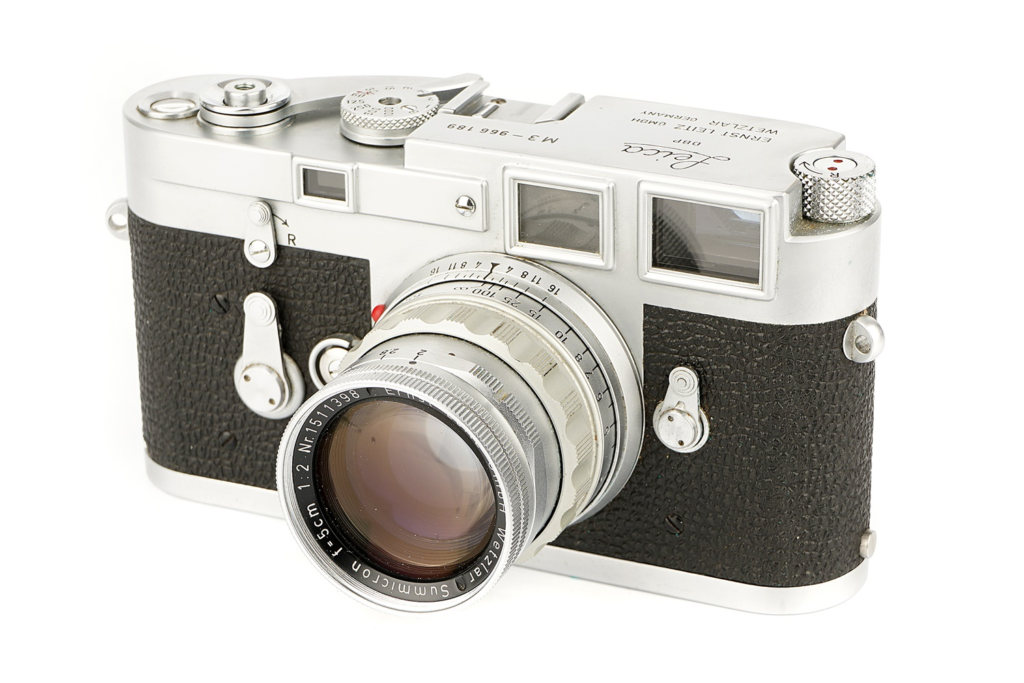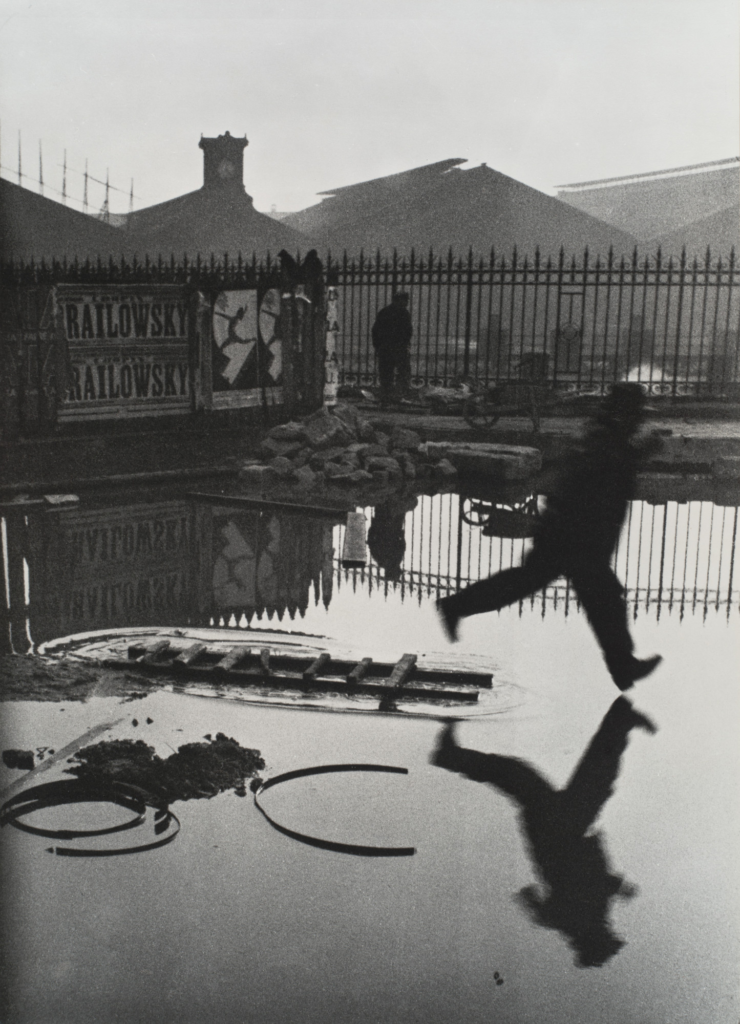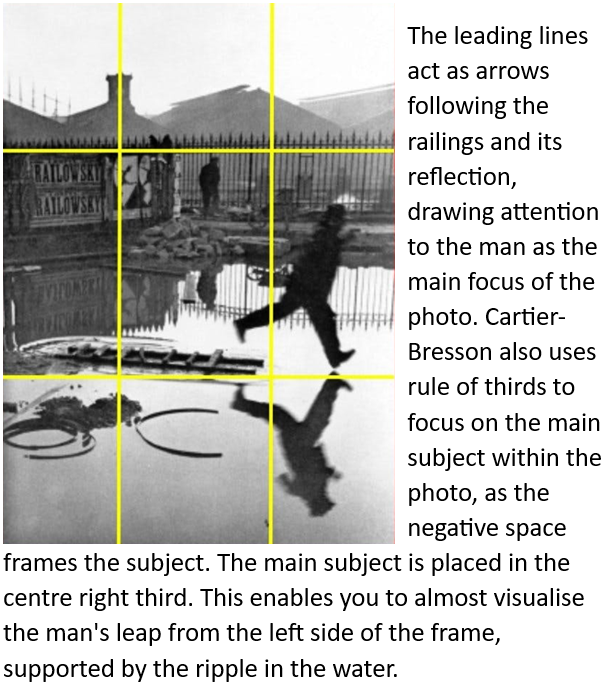Henri Cartier-Bresson
Background:
Henri Cartier-Bresson was a famous Humanist photographer who focused his work around capturing the reality of people’s everyday lives. He claims that his camera was an extension of the eye, and he brought his camera around with him everywhere.
Henri Cartier-Bresson was born in 1908 into a wealthy family in Chanteloup, Seine-et-Marne. At an early age, he was introduced to arts and was initially drawn to painting, particularly with Surrealism. As he grew older, he discovered photography and his fascination increased, he then began a lifelong passion for photography. Bresson felt as though a camera was a tool he could use to interact with the rest of the world. His theory was that photography can capture the meaning beneath outward appearance in instants of extraordinary clarity. In his early years, he decided to travel extensively from Europe to Africa with his camera by his side. Bresson states that photography is like hunting, except they don’t kill. “I adore shooting photographs,” he’d later note. “It’s like being a hunter. But some hunters are vegetarians—which is my relationship to photography.” These experiences widened his outlook on life, and he believes that ‘Photography isn’t just about images; it’s about capturing the essence of existence.’
Examples of his work:

The camera and the lens:
Henri Cartier-Bresson was known for using a camera called the Leica rangefinder that had a 50mm lens. Bresson loved the fact the camera had a 50mm lens as its similar to the human eye, ensuring he captured images that felt natural and immersive to viewers. He favoured this particular camera because it was compact, reliable and left him inconspicuous. This allowed him to use a quick style of photography, which is essential for street photography.

Another reason why he loved this camera was because it had a silent shutter, so it let him capture moments without drawing attention to himself. This silence allowed him to be stealthy with his photography.
A smaller aperture was used to allow a larger depth of field, and a fast shutter speed was used to capture a man in movement in sharp focus.
Behind the Gare St. Lazare:

Henri Cartier-Bresson is well known for his black and white photograph called Behind the Gare Saint-Lazare taken in Paris in 1932. This photo was taken at the Place de l’Europe, outside the Saint-Lazare train station, in Paris, with his portable Leica camera. It is one of his best known as it is spontaneous and is iconic because of the style that attempted to capture the decisive moment in photography.

Textures:
The choice of black & white for the photo was actually not a choice due to the technological limitations in the 1930s. By stripping away all of the colour, this lets us focus on the image’s content and not be distracted by the hues in the scene. Since there was no colour, the texture becomes more pronounced as well. A variety of different textures are included in this image, for example the water’s surface, the rough posters, the old buildings in the background and the grainy quality allows the viewer to feel connected to the location and feel as though they are there.
Lighting:
This image was taken during mid-day using natural light. Typically, photographers are wary of using midday sun for their photography due to its harshness and strong shadows it can cast. However, Cartier-Bresson turned these potential drawbacks into positives, and used the sharp shadows to add depth to the scene. The high contrast emphasises the texture throughout the image. The sun’s position was a huge factor to creating the vivid reflection seen in the puddle. Without the overhead light source, the reflection may have been less defined.
